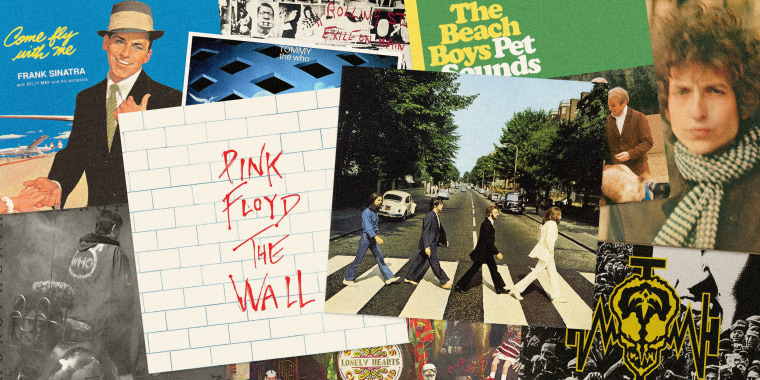It didn’t take the death of iTunes to kill the album. Album sales have been anemic since at least the advent of Napster, and certainly since iTunes, Spotify and the host of streaming services that followed changed the way millions of people — including those who grew up listening to albums — consumed music.
“Absolutely, albums are still a viable way for artists to tell a story, or to convey sentiments that are too complex for a four-minute song,” Pink Floyd co-founder Roger Waters told me during the promotion of his most recent album, “Is This The Life We Really Want?”
Still, with Apple’s announcement last week that it will eliminate its one-stop iTunes store in favor of media-specific shops, it does feel more than ever that the streaming era — with its one-hit wonders and omnipresent playlists — is driving the music economy.
Or is it?
With Apple’s announcement last week that it will eliminate its one-stop iTunes store in favor of media-specific shops, it does feel more than ever that the streaming era is driving the music economy.
Until its (alleged) decline, the album had long been the preferred way for musicians to make an artistic statement beyond the pop song format. Frank Sinatra’s “concept” albums in the 1940s and 50s were probably the first to strive to offer listeners a sonic journey beyond the then-more typical and hit-focused repertoire other artists were offering. And “The Beatles’ Second Album,” cobbled together by Capital Records executive Dave Dexter Jr. in 1964 at the height of Beatlemania and against the band’s wishes, is undoubtedly the first truly great beginning-to-end rock 'n' roll album. But over the years, there were always more pop music misses and artistic overreaches such as Herman’s Hermits’ “Hermania,” Emerson, Lake & Palmer’s “Love Beach” and Michael Bolton’s “Soul Provider’” than bona fide, culture-altering classics such as the Beach Boys’ “Pet Sounds,” The Beatles’ “Sgt. Pepper” and The Who’s “Quadrophenia.”
Want more articles like this? Sign up for the THINK newsletter to get weekly updates on the best pop culture news and analysis
And with the advent of the 80-minute-capacity Compact Disc in the 1980s, the misses soon far outweighed the hits. With artists at every end of the spectrum encouraged to offer the sort of long-playing statements previously reserved for double-LP releases by top-tier artists such as Bob Dylan ("Blonde On Blonde"), the Rolling Stones ("Exile on Main Street") and Pink Floyd ("The Wall"), albums soon became ever more bloated affairs, often featuring less than 10 minutes of wheat to more than an hour of chaff. At typically $20 per CD, it’s no surprise that music lovers soon came to resent shelling out so much for so little, and flocked in droves to illegal file-sharing sites like Napster as the new century dawned.
So perhaps it’s a bit ironic that as the high-water mark of the album statement, not to mention the granddaddy of concept albums — The Beatles’ “Abbey Road” and The Who’s “Tommy,” respectively — turn 50 this year, albums feel as dead as the dodo. Fifty years is a long time, so maybe the album’s time has simply come and gone.
But scratch beneath the surface, and you’ll find a host of artists clamoring to make statements far beyond the confines of the brief construct the typical song allows.
Artists such as Kendrick Lamar, Drake and Travis Scott regularly call on a host of collaborators to keep the momentum going on both the ever-present mix tapes that litter places like Soundcloud and their albums proper. Groups such as Lord Huron and the Lumineers are pushing the boundaries of their craft by making not just albums but live show set lists with an arc and story far beyond what a mere single could ever hope to allow, indoctrinating new generations into the kinds of musical wonders only the complete album-listening experience offers.
And of course, there’s Beyonce. Her 2016 album “Lemonade” was perhaps the best, and surely the most fully realized, concept album since Queensryche’s "Operation: Mindcrime," while these days a lost curio to all but the most die-hard fans of the band and the genre, probably the last album of its kind to capture anything close to the collective pop culture consciousness. And that was in 1988! Not content to limit her storytelling to a recorded work, Beyonce, like more and more artists these days, turned in a stunning, 65-minute “visual album” which aired on HBO (and the artist-friendly, Jay-Z-owned streaming service Tidal), that laid plain her artistic ambitions in a manner not seen since at least Prince in his heyday.
So mourn not the death of the iTunes store. And while sales of CDs have trickled to the point of them being little more than concert souvenirs, there are plenty of reasons to feel buoyed about the future of the album as art. Musicians worth listening to still have plenty to say, and they are doing their best to say it within the context of the old-school album format.
Serious music fans have embraced the resurgence of vinyl and the long-form listening experience it offers. And as more and more artists seek to stretch their artistic palettes, such as Dylan, The Beatles and Pink Floyd before them, they will no doubt set their sights on storytelling that cannot be consumed in small doses, thus offering listeners options that the doomsday prognosticators of just a few days ago could hardly have imagined.
